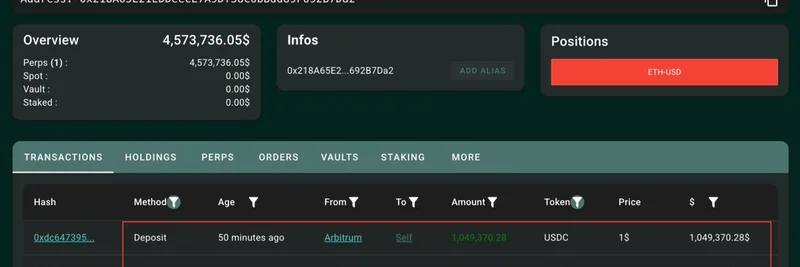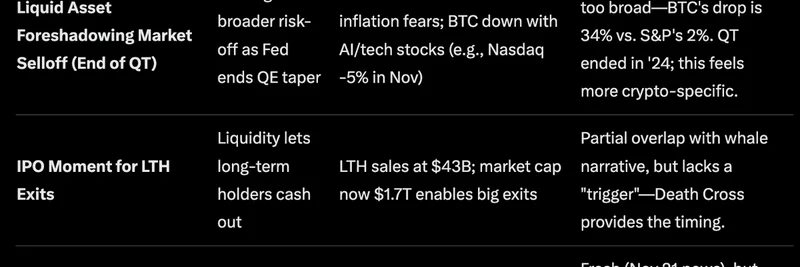In the ever-volatile world of cryptocurrency trading, big players—often called whales—make moves that can hint at broader market trends. Recently, onchain data spotlighted a whale depositing a hefty $1.71 million in USDC to Hyperliquid, a decentralized perpetual futures exchange. This move was aimed at beefing up the margin on a substantial 7,200 ETH short position valued at around $22.5 million.
For those new to the lingo, a short position is essentially a bet that the price of an asset, in this case Ethereum (ETH), will drop. If it does, the trader profits; if it rises, they could face losses or even liquidation, where the position is automatically closed to prevent further debt. Hyperliquid specializes in these perpetual contracts, allowing traders to leverage their positions without expiration dates, all on a high-speed blockchain.
The data comes from Onchain Lens, a platform simplifying blockchain analytics, powered by Hyperbot AI. According to their tweet, this deposit has adjusted the trader's liquidation price to $3,688.30. With the current mark price hovering around $3,133, the position is sitting on an unrealized profit of about $242,800. That's a nice cushion, but crypto markets can swing wildly.
Looking closer at the transactions, the whale made two deposits: one for roughly $1.05 million about 50 minutes before the snapshot, and another for $669,000 around 17 hours prior. These add up to the $1.71 million figure, strategically increasing the margin to handle potential price spikes.
The position details reveal a leverage of about 10x on a cross-margin setup, with full exposure to shorting ETH. The entry average was $3,167, and with the mark price lower, it's in the green for now. But the liquidation threshold at $3,688 means if ETH climbs past that—say, due to positive news or market pumps—the position could get wiped out.
Adding a bit of color, a reply from LimitsBot highlighted that this trader paid $3,502.66 in taker fees for the moves. Taker fees are charges for executing orders that take liquidity from the market, and while not huge in the grand scheme, it's a reminder of the costs involved in high-stakes trading. Check out the fee details for more.
This kind of activity often sparks discussions in the crypto community. Is this whale anticipating a downturn in ETH, perhaps tied to broader economic factors or shifts in meme token hype? While Hyperliquid is known for trading major assets like ETH, it also hosts perps for emerging meme coins, making it a hub for speculative plays. Moves like this could influence sentiment across the board, especially if other traders follow suit.
For blockchain practitioners diving into DeFi and trading, tools like Hyperbot (hyperbot.network) offer real-time insights into such onchain actions. Keeping an eye on whale movements can provide valuable edges in understanding market dynamics.
As always, remember that crypto trading involves high risks, and this is not financial advice. Stay informed, trade responsibly, and keep building your knowledge base here at Meme Insider.




